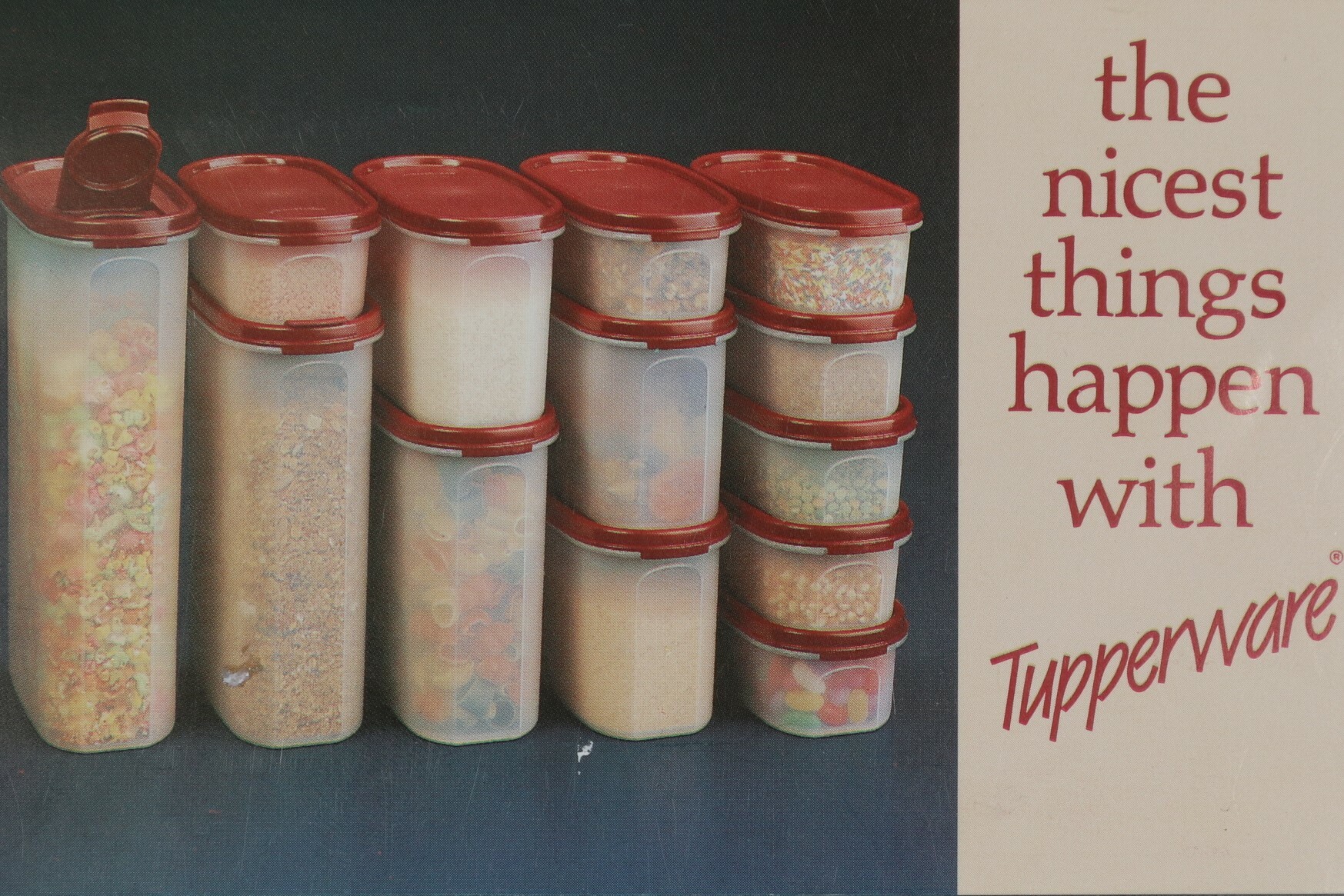by Paulien Martens
From the end of October 2022, Tupperware will no longer be imported into New Zealand.
Tupperware was founded in the United States in 1946 and was part of the growing plastics industry, providing food storage and homeware products. It has been sold to New Zealand families for almost 50 years.
For much of this time, Tupperware parties were a popular way to buy these products and a way to see them in action in a fun setting. The postcard below is an invitation, promising that "Nice things happen with Tupperware…at my Tupperware party."


First marketed in America by a woman called Brownie Wise, these events were largely attended by women and were a place to socialise with friends and neighbours. For a traditional Tupperware party, the host or hostess would send out the invitations, and the party would be led by a Tupperware dealer who demonstrated how the products worked. This could involve games to showcase certain qualities of the products, such as their leak-proof design. People could order Tupperware at these parties, which contributed to its popularity.
The rise in online shopping, combined with the Covid-19 pandemic, has seen a decrease in the popularity of Tupperware parties.
Today, there is also much more awareness about the damage that plastics can do to our environment, and biodegradable plastics are becoming more common. Museums have a different problem because they usually want plastic objects to last as long as possible! Museums overseas have had issues with preserving Tupperware because the plastic perishes and degrades over time. Although Canterbury Museum has no Tupperware in its collection, we have similar issues with toys, homeware, clothing and other items made of various types of plastic.

Plastic objects are difficult to preserve and care for. They bring up interesting questions about how much Museums should interfere with the natural life of an object. At the same time, we still want to collect plastic objects that are significant to the daily lives of New Zealanders and preserve them for future generations.
The type of plastic can determine its optimum storage conditions. Cold storage can often slow down the deterioration of plastic objects, reducing the likelihood of leaching, cracking and other degradation. The best way to preserve Tupperware is to put it in the fridge!





